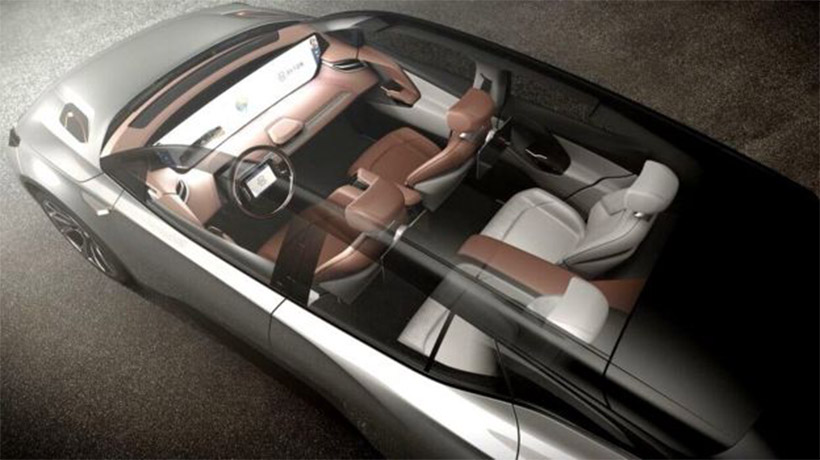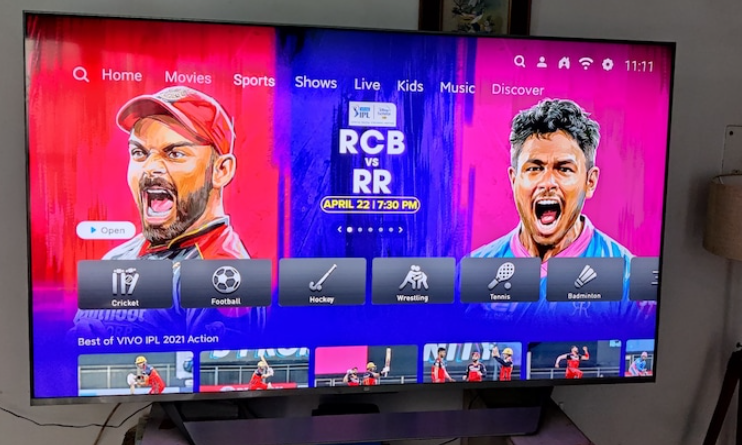Trending Now
- 830 voters names go missing in Kavundampalayam constituency
- If BJP comes to power we shall consider bringing back electoral bonds: Nirmala Sitaraman
- Monitoring at check posts between Kerala and TN intensified as bird flu gets virulent in Kerala
Technology
CES 2018: Byton unveils futuristic ‘truly smart’ car
![]() January 8, 2018
January 8, 2018
A new car designed by former BMW and Apple employees has been unveiled.
The Byton – which sports a huge touchscreen dashboard – reimagines what it feels like to be inside a car.
While on paper the electric vehicle doesn’t quite match Tesla on performance or price, the firm behind it told the BBC it hoped people in future would care more about “digital power” than horsepower.
But experts say it currently lacks the charging infrastructure it requires.
The name Byton refers to the phrase Bytes on Wheels.
“We want to be the company bringing into the market the first real smart car,” said Carsten Breitfeld, its chief executive.
Ahead of the concept vehicle’s official launch at the annual CES trade show in Las Vegas, Byton gave the BBC an exclusive look at the technology. It was being kept in an unmarked warehouse just off the city’s famous strip, hidden from spying eyes behind a black curtain.
- Bodybuilding in the virtual reality gym
- App uses saliva to recommend what to eat
- Preview of CES’s coolest new tech
- The house that hears burglars
The company is bankrolled with money from China, and believes it has the development know-how to overcome the hurdles that see most new car companies fail.
To solve perhaps its biggest problem, Byton will need to strike a deal with Tesla’s Elon Musk.
Giant screen
“What we want to try to do is merge your life outside of the car with your experience inside the car,” explained Jeff Chung, head of Byton’s Intelligent Car Experience division.
In front of us is a huge display that stretches out across almost the entire dashboard. During the day it is bright white, but at night it inverts to be less distracting.
The screen is part of what Mr Chung, formerly of Apple’s Mac team, calls the “digital lounge”. It can be controlled using touch, voice and Minority Report-esque gestures.
A tablet computer is situated in the middle of the steering wheel, while an extra screen can be found on the back of each front seat.
The main display can show any number of things – video clips, calendars, mapping, health data and so on. As you sit in the car, internal cameras will determine who you are and load your profile, adjusting the driving seat position and other customisations.
When in full self-driving mode, or stationary, the front seats can turn towards each other for an apparently more comfortable and sociable position – opening up the middle of the car so that those in the back can see the large display.
It’s the most sophisticated interface I’ve seen in a car. But I put it to Mr Chung that taking your hand off the wheel to wiggle your fingers about in mid-air might be extremely distracting while driving.
“I actually agree,” he said.
“[But] all features of the car will be accessible via touch. And so you’ll have the ability on the driver’s tablet to make all the selections that you do with gestures.
“After you buy the car, we might actually pare down the gestures as people aren’t very accustomed to it.
“We would never want to force any driver to do gestures to control specific features. Having the ability to customise is the key.”
Tesla rival
Fearful of the car being spotted and posted on social media, my test ride was limited to a small area of the warehouse.
It means I can’t speak first-hand to the car’s performance – but according to Byton’s own figures, it will do 0-60mph (0-97km/h) in about five seconds.
That makes the $45,000 (£33,187) Byton slower than Tesla’s $35,000 Model 3.
Indeed, on most performance benchmarks, Byton’s car is less impressive. But Mr Breitfeld thinks to dwell on that would be missing the point.
Just like our smartphones, he suggested the majority of consumers would base their purchase on which option has the best software rather than speed specs.
The car is kitted out with the sensors it needs to deliver “level 4” autonomy – the level at which a driver can safely – in theory – go to sleep at the wheel.
That won’t come for a few years, so at first the car will only offer “level 3”, meaning it can drive itself, but drivers must stay alert and ready to retake control at all times.
Getting it built
Last year, Faraday Future unveiled its production car, the FF91, with huge fanfare and a pledge to get started on building it as soon as possible.
Since then, it has cancelled plans to build a huge factory in Nevada, and its chief backer – LeEco’s Jia Yueting – has been embroiled in money problems that have seen his assets seized in China.
Faraday Future followed a pattern of brazen new car companies finding it incredibly difficult to make their concept cars a reality.
Even Tesla has struggled to manufacture its Model 3 car quickly enough to meet demand, frustrating investors who feel it is a make-or-break product.
Mr Breitfeld told the BBC he felt Byton was protected from such pitfalls.
“I spent 20 years at BMW, responsible for the i8 programme,” he said.
“I built this company right from the first day in a way that we have the people on board who know how to industrialise a car, which is a huge job.
“We’ve started the construction of our plant in Nanjing, China. We are well underway.”
Unlike Faraday Future, the company is not relying on one major investor with “too much control”. Among its investors is Chinese internet giant, Tencent.
Power struggle
But one obvious challenge that might stump Byton is a lack of fast-charging stations.
While Tesla offers its customers some 8,496 superchargers around the world, Byton has zero.
Mr Breitfeld said he expects Tesla would be happy – or be forced – to share its stations.
“We have to come together and share this infrastructure across the companies,” he said.
“This is not a differentiating factor. This is something which makes the whole industry successful.”
Tesla did not respond to the BBC’s request for comment – and Mr Breitfeld would not say whether discussions had taken place between the companies.
“It seems highly unlikely that Tesla will want to share the infrastructure they’ve worked so hard to build with a rival – unless there’s some kind of altruistic view that it’s for the greater good,” commented Ben Wood, an analyst at the consultancy CCS Insight.
“It underlines the challenges of electric vehicles. Building the cars is relatively simple these days, but you need everything that goes around it. Charging infrastructure, more than anything, is the challenge.”
That said, Tesla has appeared to be open to sharing its chargers in the past.
In 2014, Mr Musk told British gadget site Pocket-lint that it would accommodate competitors, but they had to pay a reasonable share of the costs.
“The intent of the supercharger network is not to create a walled garden,” Mr Musk said.
“Any other manufacturer that’s interested in using them, we’d be happy to accommodate. They’d need to contribute to the capital costs proportional to their fleet’s usage of the network.”
For Mr Breitfeld, it’s an inevitability.
Just as motorists don’t have different petrol stations for different car brands – so electric charging stations must work in a similar manner, he said.
























